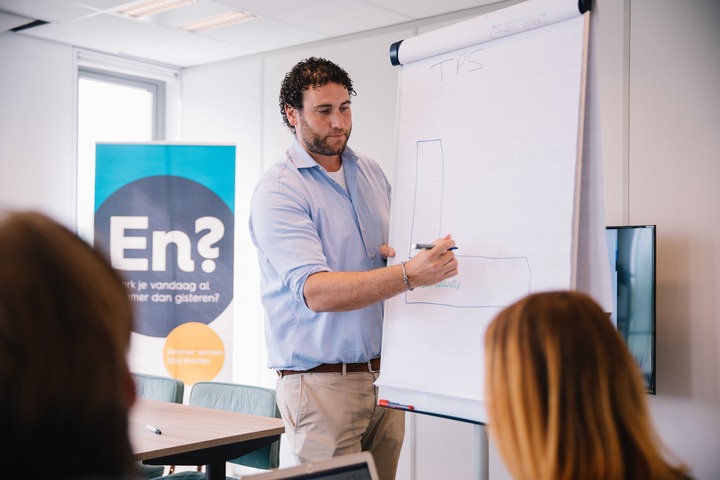The literal definition of Six Sigma has been explained. But what does Lean mean? It stands for slender or slim. In other words, using Lean within your company leads to ‘slimmer’ organisational processes, because it focuses on eliminating waste. Waste is defined as elements that do not add any form of value. By removing these unnecessary and unwanted elements, your company will be able to perform optimally. And this will lead to continuous improvement within your company.
In order to be able to improve continuously, it is necessary to create a working environment where customer value and employee take on a centralized role. Keeping your employees enthusiastic and motivated is one of the pillars of Lean and can be done by involving them in decisions and improvements.
Not only will this result in them being more satisfied about their work, but it creates a more efficient and sustainable working environment.
How to apply this within your organisation?
The best place to start is the problem. Take a process that is not running quite as smoothly as you would like, for example. Using Lean Six Sigma, this means you will start mapping out the different types of waste. There are eight in total, namely:
1. Transport
This first type of waste is as simple as it sounds. Moving something from A to B falls under this subcategory.
2. Inventory
In contrast to transport, the concept of inventory is less narrow. This covers the entire stock from raw materials to printed out or digital complaint forms. Another example could be the (un)opened emails on your computer, or everything in your warehouse, if you have one.
3. Motion
Motion is different from transport. In this category, they mean actual movements. Think of walking to the printer, getting a glass of water or even turning around. But not only your movements, the ones within your digital system and database are meant as well. If you open your mail to look something up, then forget what you were about to look up and have to switch screens to check again, this is considered a waste of motion and thus time.
4. Waiting
Waiting time is inescapable, because processes take up time. However, try to minimise this!
5. Overproduction
As the name implies, overproduction means producing more than necessary. This may lead to an increasing inventory. As we saw before, this can be considered a waste as well.
6. Overprocessing
Overprocessing means doing more than necessary. This often happens because organisations think it might add customer value, but quite frequently, this is not the case. It mainly results in appearance. Think of stores wrapping up something you bought for yourself. This is only an extra (unnecessary) service.
7. Defects
However, this subcategory of waste might be the most risky one. Worst case scenario: the process of production has to start all over because of one mistake. This can include a small error, e.g. typo in the email address, but it could be much worse.
8. Skills
The last form of waste takes the skills of your employees into account. This might be lack of talent, but could be overclassification as well.
Lean tools
To remember these eight types, a mnemonic could come in handy. Whenever you are talking about waste, think of TIMWOODS. If you were wondering, these are all first letters of the types of waste, from number one to eight.
Apply TIMWOODS before diving in your project, to map all possible issues that could arise along the way. And if you are lucky, it might show some improvements that could be realised quite easily. Holding onto continuous improvement would therefore become easier.
Besides using Lean management, Lean projects and tools such as TIMWOODS, there are other things that can be applied when you are striving towards continuous improvement. Examples are 5S and Value Stream Map. An improvement board might help as well. This leads to involvement of your employees. And keep in mind, when you have been using these tools for a while, continuous improvement is not an aim of your organisation anymore, but it is presumed to be natural.





